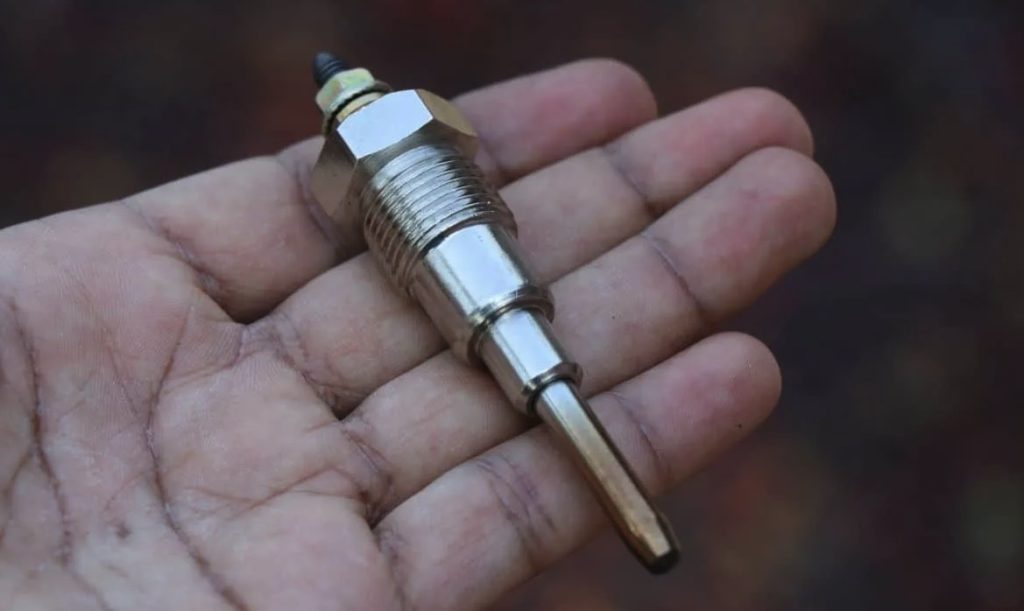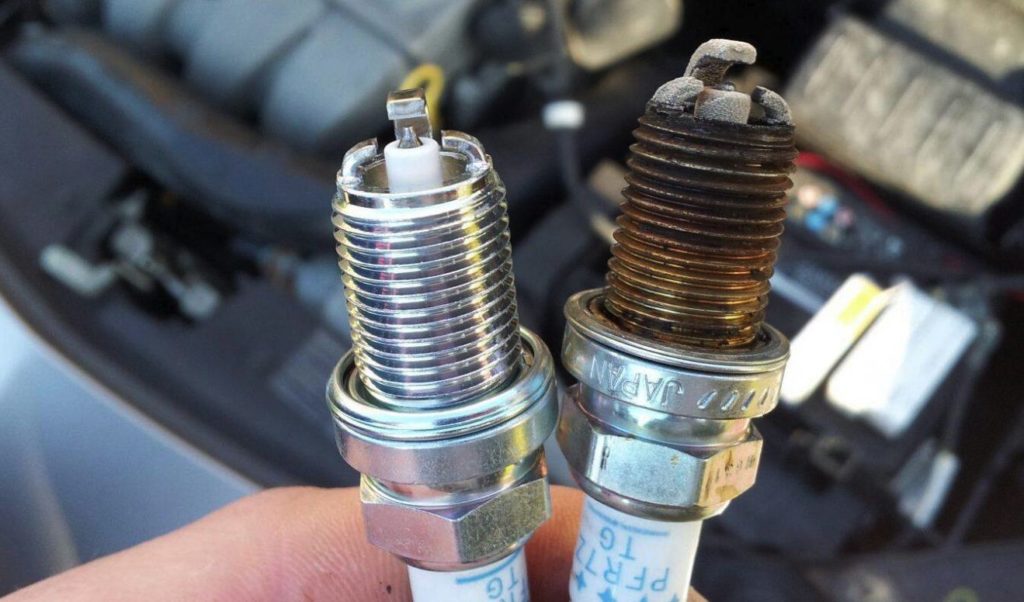Diesel engines are internal combustion engines in which ignition of the fuel is caused by the elevated temperature of the air in the cylinder due to mechanical compression; thus, the name compression-ignition engine (CI engine) which is another name referring to a diesel engine.
The diesel engine has a high engine efficiency due to its very high expansion ratio and inherent lean burn, which enables heat dissipation by the excess air. A small efficiency loss is also avoided due to the direct injection since there is no unburned fuel during overlap, and therefore no fuel goes directly from the intake/injection to the exhaust.
With the different operating principles compared to petrol engines, you may be wondering whether there are spark plugs on diesel engines or whether there is any use for having them installed and how many spark plugs in diesel engines to have.
Does a Diesel Engine Use Sparks Plugs?
There are no spark plugs on diesel engines; instead, these engines have a compression ignition and glow plugs that heat the combustion chamber to aid ignition if a diesel engine is cold.
In compression ignition engines which mainly use diesel as a fuel, the compression ratio is such a high that the fuel starts combustion as soon as it is injected into the engine cylinder after the compression stroke. However, sometimes due to cold weather, the compressed air temperature may not be so high for auto-ignition. Therefore in this situation in the diesel engines, glow plugs are provided. Glow plugs can be used for the cold starting of the engine.
Why Do Diesels Not Use Spark Plugs?
The reason diesel engines do not need to have any spark plugs is because of their ignition method. You see, unlike in petrol engines (gasoline engines) where the gasoline can ignite in its current state, in diesels, the fuel must first become atomized for ignition. Diesel engines rely on compression to ignite the fuel, which makes a spark plug redundant.
Diesel fuel does not require a spark to initiate combustion. The combustion occurs when the diesel is injected into the high-pressure, high-temperature air. Also, diesel and gasoline have completely different burning characteristics. In gasoline, the spark initiates the combustion.
The flame front then spreads throughout the combustion chamber and consumes the entire air-fuel mixture. Hence the burning process is uniform, whereas, in diesel engines, combustion is initiated simultaneously at multiple points in the chamber.
This is because multiple points in the compressed air might have achieved the conditions necessary for the ignition of diesel. Thus because of the multiple flame fronts emanating and combining, the diesel combustion is inherently non-uniform.
Introducing a spark plug in a diesel engine is very inefficient if you think about it. Visualizing the scenario, what is going to happen is that the required ignition temperature of the mixture is already achieved from the fuel injector while in compression.
Further, the ignition temperature will only rise. While this will, of course, help in the combustion, the moles of the fuel will burn more rapidly than expected due to the excessive heating, thus by the end of the expansion, it might not have the power rating expected because the flame front has helped in burning of the end gas earlier than expected.
What Do Diesels Have Instead of Spark Plugs?
As we’ve mentioned earlier, diesels have a compression ignition and glow plugs that heat the combustion chamber to aid ignition if a diesel engine is cold. A glow plug is an electrical heating device located in each cylinder of the diesel engine that ensures reliable starts in all weather conditions.
It is a long, thin piece of metal with a heating element at the tip that is made from oxidation-resistant and high temperature-resistant materials.
The glow plug works by electrifying the heating element, so it heats up and emits visible light (hence the name). Intake air is compressed before the fuel injector spray directs fuel onto the glow plug’s hot tip during the fuel injection. The injected fuel mixes with the compressed air, evaporates, and starts combustion almost simultaneously.
With the use of a glow plug instead of a spark in diesels, these engines utilize heat instead of an arc, making the fuel molecule move quicker and thereby producing more efficiency in power. From the combination of their piston design and heated chamber from the glow plugs, the diesel fuel is atomized into a mist.
The mist becomes more volatile, therefore igniting in the combustion chamber with a much more efficient explosion, forcing the piston with a stronger force through its stroke.
Do Older Diesels Have Spark Plugs?
Neither a modern diesel engine nor old model diesel engines have spark plugs- they ignite the fuel by high compression pressures, which result in very high temperatures. Ignition is initiated by injecting a fine mist of fuel into the combustion chamber when the ignition point is attained. They do, however, have glow plugs which are particularly useful in starting a cold engine.
What is the Difference between Glow Plugs and Spark Plugs?
While both spark plugs and glow plugs are the ignition source is a combination engine, they are different in several aspects. Unfortunately, knowing the difference between glow plugs vs spark plugs can be hard for those who are not familiar with basic auto parts.
Glow Plugs are in Diesels, Spark Plugs in Gasoline Engines
Perhaps we can start with the rather obvious differences: The type of engines there are found and their appearances. Glow plugs are only found in diesel engines, and spark plugs are in gasoline ones.
They Look Different

As for the looks, spark plugs have a metal body, ceramic insulator, internal resistor, and a pair of electrodes.
The insulator is essential for ensuring the spark only occurs at the tip of the electrode. On the other hand, each glow plug has a terminal, a threaded body, and a tip that protrudes into the engine’s combustion chamber. The plug’s body, which is threaded into the cylinder head, acts as an electrical ground for the heating element.

Another difference between the two is the way they work. A spark plug works continuously to ensure your engine is running. In a gasoline vehicle, it is in the throttle body where the fuel is mixed with the intake air before being injected into the combustion chamber.
The spark plug receives a high-voltage charge from the ignition coil, causing it to spark and ignite the fuel-air mixture. This process is repeated very many times within a minute span. The resulting explosion forces the piston downward in the cylinder, causing the engine’s crankshaft to turn.
Unlike a spark plug that works continuously while driving, glow plugs are only needed during the ignition process. They act as a starting aid to get the engine going. The glow plug works by electrifying the heating element heating it up.
Intake air is compressed before the fuel injector spray directs fuel onto the hot tip of the glow plug during the fuel injection. The injected fuel mixes with the compressed air, evaporates, and starts combustion almost simultaneously, even when the engine is cold.
How Many Glow Plugs Does a Diesel Engine Have?
Diesel engines may have as many as ten glow plugs, one located in each cylinder. The glow plugs are directly connected to the engine control unit, which uses a microprocessor to analyze engine input.
The actual number of glow plugs varies depending on the engine’s manufacturer. The most common is 6,4 for starting, and 2, for running. How long it takes for them to heat up varies from one manufacturer to another- anything from3 minutes to 30 minutes after power is applied. The more glow plugs the engine has; the less starting time will be.
How do you Know Glow plugs are Bad?
While your diesel engine will still run even if one of the glow plugs fails, all of your cylinder’s glow plugs must fire properly without failure so that they can ignite when needed while creating enough pressure at near-temperature levels in order to create power for your vehicle without damaging any other engine components.
There are several signs that could mean your glow plugs are bad and need to be replaced:
- Trouble starting the engine when cold.
- Engine misfiring
- Rough idling
- Decreased fuel efficiency
- Large amounts of smoke at startup
To determine a glow plug is bad, you can test with a DC clamp meter to check the glow plug power circuit, heater element (resistance), and electrical connections. If you find a problem, you could narrow down the potential causes by using some of the regular multimeter tests. With a digital multimeter, you can check the glow plug’s electrical resistance and the power supply (electrical voltage.
